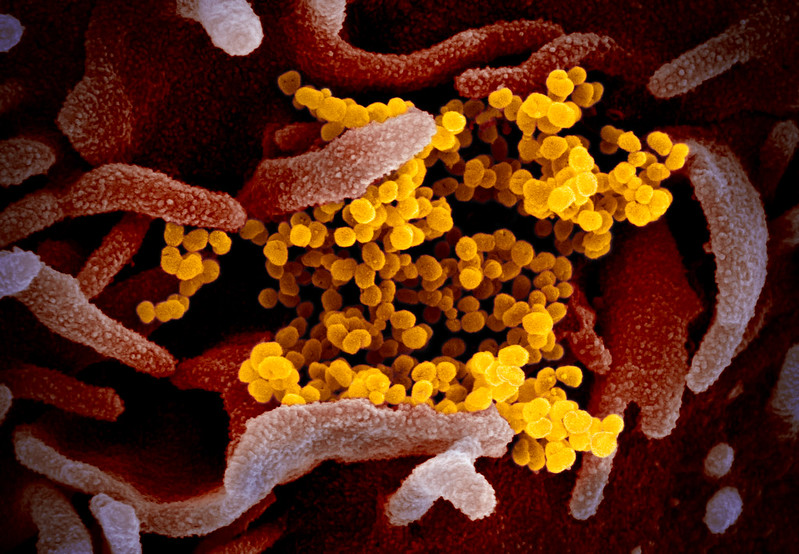A second case of COVID-19 has been confirmed in New Zealand, in a person who had travelled to northern Italy.
With a rapidly growing understanding of the COVID-19 coronavirus, we asked New Zealand experts on what comprised the latest consensus on the virus, and how the technology was being employed to track it.
Professor David Hayman, Professor of Infectious Disease Ecology, Massey University School of Veterinary Science, comments:
“The virus seems to be spread through the respiratory system, mainly through contact with respiratory droplets rather than through the air. This means virus is in small droplets that then land on people directly or on surfaces to be touched later. This is why it is important to stay some distance (currently recommended to be a metre) from a person who is unwell and coughing, why it’s important to wash your hands and reduce how frequently you touch the sites where the virus can enter, so eye, nose, or mouth. There is some evidence some individuals might also shed the virus in faeces, but the same hand washing and hygiene procedures should reduce the transmission if so.
“Currently it is still not clear which animals were the source of the infection to people. The virus definitely has close relatives in the bats in China, but it may have been another type of animal that was infected by a bat virus before infecting people, as has been seen with SARS and MERS coronaviruses. A close relative to this was found in pangolins, but from the genetic analyses I have seen these still are not as close to the human virus as the one published from a bat.
“The COVID-19 disease has a relatively high case fatality rate overall for an infectious respiratory disease, killing 1 to 2%. However, the data suggest it is very skewed towards older patients, with the percentage less than 0.5% (0.2-0.4%) in those less than 50 and reaching nearly 15% in those over 80. This may lower if it turns out there are a lot of asymptomatic cases with time, but could also increase if those in critical condition in hospitals die. Also, it’s worth pointing out while in those less than 40 the fatality rate is reportedly 0.2%, this is still high should this virus infect a lot of people.
“The comparison with flu has often been made and in my opinion it’s quite useful. While the virus is a coronavirus, so genetically more related to some common cold viruses, its transmission and the disease is quite like influenza. This is true in terms of disease and some characteristics of the transmission dynamics, though that might change as more data become available. There are some key differences, however, relating to how flu viruses evolve, which affects vaccine development, and in particular the fatality rates: this virus is much more lethal in older people than seasonal flu, though much less lethal in younger ages than the famous and devastating 1918 global pandemic virus.”
No conflict of interest.
Professor Dave Parry, Head of Department of Computer Science, AUT:
“With an illness like COVID-19, health systems need to know how many people are infected, where they are and how likely it is that they will infect someone else. A simple approach is ‘Flu tracking‘, a website that asks you how you feel every week. This produces maps that can let you and the authorities know how many people are infected in different areas and hence help decide whether to shut schools, etc. There have been attempts to use Google search terms (e.g., ‘cough treatment’) to track flu but this is not very effective as it is not specific enough.
“In order to get the disease, you need to be near someone who already has it. Mobile phone location data is extremely useful for seeing changes in behaviour – for example congestion on motorways – and this may also be used to understand where people are gathering, and which groups of people are regularly together. This can be anonymous – we know that person A is the same person ‘seen’ at the airport earlier but not who they are. Interestingly, Italian work showed that children at school in different year groups have very little contact with each other except at break time – so not having breaks or staggering break times may reduce disease transmission.
“Privacy is much more of an issue in New Zealand than China for example, but since honest reporting is very important, it is vital to ensure people accept and understand the data collection.”
No conflict of interest.
Dr Jennifer Cole, Biological Anthropologist, Royal Holloway, University of London, said:
“Early estimates of fatality rates tend to be higher and then drop as the outbreak progresses. This is mainly because early figures are based on the more severe cases only – those that seek hospital treatment – and so don’t capture mild cases. It’s not until later in the outbreak, when large numbers of people who wouldn’t normally have sought healthcare, such as all the passengers on the quarantined ships, everyone an infected person has been in contact with, or the entire population of a town is tested that more accurate numbers start to emerge and the figures settle down. Early cases may also be more likely to result in death as people’s symptoms may be more advanced before they seek treatment. The earlier people receive treatment the better chance they may have of making a full recovery. Scientists don’t always consider explaining why figures change as more information about a situation emerges, which can leave people feeling confused and not sure whether figures are reliable or not. Estimates and projections should always be put into context. If figures and estimates change, it’s important to clearly explain why this has happened.”
No conflict of interest declared.
